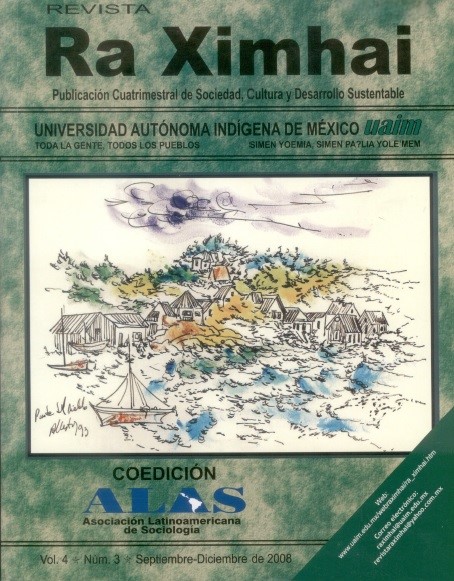Trends in global climate change and associated extreme events
DOI:
https://doi.org/10.35197/rx.04.03.2008.06.jsKeywords:
global warming, mitigation alternatives, adoption mediumsAbstract
A broad scientific consensus has been reached that human activities directly or indirectly alter the composition of the atmosphere, which combined with natural climate variability, has caused the global climate to change significantly in this regard. The increase in the concentration of winter gases is the one that causes regional and global changes in temperature, precipitation and other climatic variables, which leads to global changes in soil humidity, melting of glaciers, increases in the level of sea and the most frequent and severe occurrence of extreme events such as hurricanes, cold fronts, floods and droughts. Therefore, in the face of global climate change, humanity has two great challenges: reversing negative trends through mitigation and reducing vulnerability to extreme events associated with adaptation and prevention in the face of environmental contingencies.
Downloads
References
Arriaga, L. y Gómez, L. 2005. Posibles efectos del cambio climático en algunos componentes de la biodiversidad de México. (En línea). Disponible en www.ine.gob.mx/ueajei/publicaciones/libros/437/arriaga.html.
Bourne, J. 2008. Change is here. National Geographic Magazine. Special Report June 2008. pp: 7-9.
Cabal, Y. 2008. Cambio climático, situación actual y perspectiva para Tabasco. En: Primer Foro Cambio Climático en el Estado de Tabasco. Comisión de Ecología, Recursos Naturales y Desarrollo Sustentable. H. Congreso del Estado de Tabasco.
Cornwall, C. 2008. La verdad sobre el calentamiento global. Selecciones Reader´s Digest. pp: 37-43.
Hayden, T. 2008. La condición humana. National Geographic en Español. Edición Especial. pp: 12-49.
Hassan, R., Scholes, R. y N. Ash. 2005. Ecosystems and human well-being: current state and trends. Findings of the Condition and Trends Working Group.
Houghton, J., Meira, L., Chander, B., Harris, N., Kattenberg, A. & K. Maskell. 1996. Climate Change1995: the science of climate change. Cambridge University Press, Cambridge.
–––––IPCC [Intergovernmental Panel on Climate Change]. 2001. Tercer informe de evaluación. Cambio climático 2001: la base científica. Cambridge University Press. Cambridge. 94 p.
Macias, J. 2007. Los desastres, su impacto social y la importancia de su prevención. En: Seminarios de protección civil y desastres inducidos por fenómenos naturales. Memorias. Foro Consultivo Científico y Tecnológico, A. C. México. pp: 112-114.
Monterroso, A., Gómez, J., Tinoco, J. y J. Estrada. 2007. Impacto del cambio climático sobre dos especies representativas del trópico mexicano Cedrela odorata y Swietenia macrophylla en la Península de Yucatán. En: I Congreso sobre Manejo de Ecosistemas y Biodiversidad. Memorias. Ministerio de Medio Ambiente. Cuba.
Nicklen, P. 2008. Ice cap changes. National Geographic Magazine. Special Report June 2008. pp: 38-39.
Rivera-Ávila, M. A. 1999. El cambio climático. Consejo Nacional para la Cultura y las Artes. México, D. F.
Zúñiga, P. 2007. Protección civil y desastres naturales. En: Seminarios de protección civil y desastres inducidos por fenómenos naturales. Memorias. Foro Consultivo Científico y Tecnológico, A. C. México. pp: 25-33.
Downloads
Published
How to Cite
Issue
Section
License
Copyright (c) 2008 José Antonio Santiago Lastra , Miriam López Carmona , Sergio López Mendoza

This work is licensed under a Creative Commons Attribution-NonCommercial 4.0 International License.
Usted es libre de:
- Compartir — copiar y redistribuir el material en cualquier medio o formato
- Adaptar — remezclar, transformar y construir a partir del material
- La licenciante no puede revocar estas libertades en tanto usted siga los términos de la licencia
Bajo los siguientes términos:
- Atribución — Usted debe dar crédito de manera adecuada , brindar un enlace a la licencia, e indicar si se han realizado cambios . Puede hacerlo en cualquier forma razonable, pero no de forma tal que sugiera que usted o su uso tienen el apoyo de la licenciante.
- NoComercial — Usted no puede hacer uso del material con propósitos comerciales .
- No hay restricciones adicionales — No puede aplicar términos legales ni medidas tecnológicas que restrinjan legalmente a otras a hacer cualquier uso permitido por la licencia.








